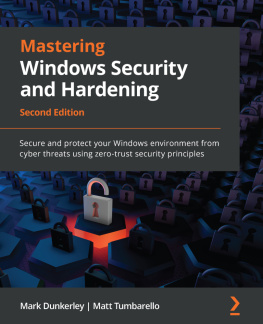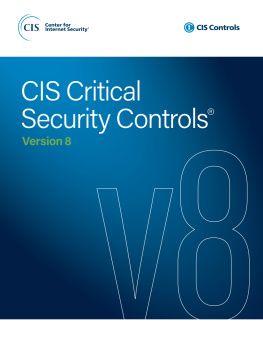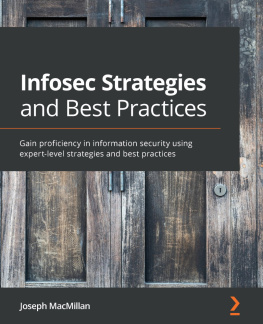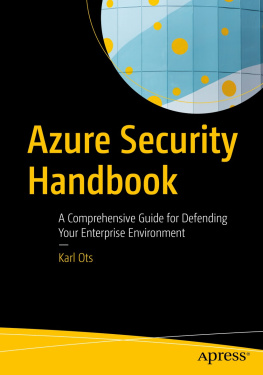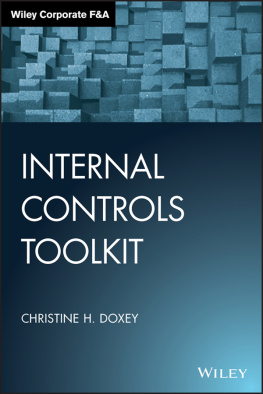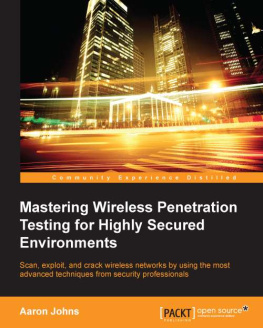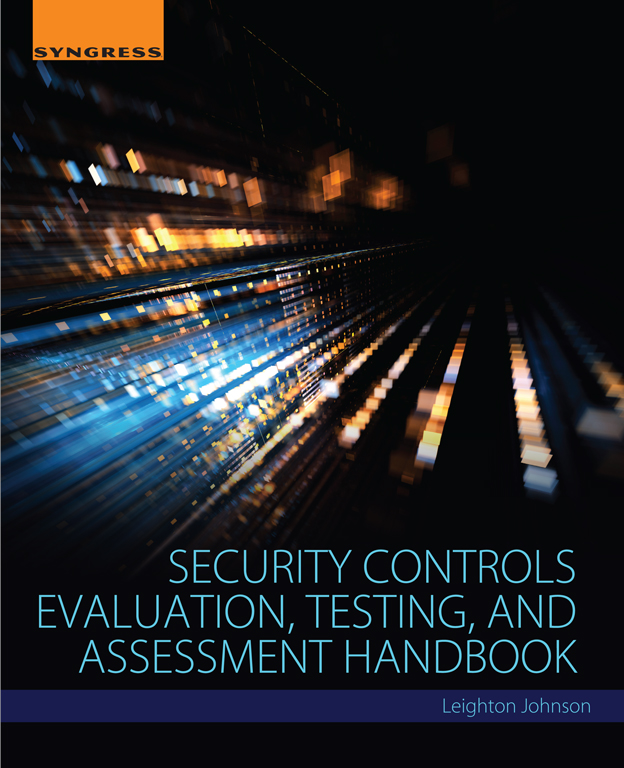Security Controls Evaluation, Testing, and Assessment Handbook
Leighton Johnson
Table of Contents
Copyright
Acquiring Editor: Chris Katsaropoulos
Editorial Project Manager: Anna Valutkevich
Production Project Manager: Mohana Natarajan
Cover Designer: Mark Rogers
Syngress is an imprint of Elsevier
225 Wyman Street, Waltham, MA 02451, USA
Copyright 2016 Elsevier Inc. All rights reserved.
No part of this publication may be reproduced or transmitted in any form or by any means, electronic or mechanical, including photocopying, recording, or any information storage and retrieval system, without permission in writing from the publisher. Details on how to seek permission, further information about the Publishers permissions policies and our arrangements with organizations such as the Copyright Clearance Center and the Copyright Licensing Agency, can be found at our website: www.elsevier.com/permissions.
This book and the individual contributions contained in it are protected under copyright by the Publisher (other than as may be noted herein).
Notices
Knowledge and best practice in this field are constantly changing. As new research and experience broaden our understanding, changes in research methods, professional practices, or medical treatment may become necessary.
Practitioners and researchers must always rely on their own experience and knowledge in evaluating and using any information, methods, compounds, or experiments described herein. In using such information or methods they should be mindful of their own safety and the safety of others, including parties for whom they have a professional responsibility.
To the fullest extent of the law, neither the Publisher nor the authors, contributors, or editors, assume any liability for any injury and/or damage to persons or property as a matter of products liability, negligence or otherwise, or from any use or operation of any methods, products, instructions, or ideas contained in the material herein.
British Library Cataloguing-in-Publication Data
A catalogue record for this book is available from the British Library
Library of Congress Cataloging-in-Publication Data
A catalog record for this book is available from the Library of Congress
ISBN: 978-0-12-802324-2
For information on all Syngress publications visit our website at http://store.elsevier.com/Syngress
Typeset by Thomson Digital

Dedication
I dedicate this book to Marie, my secretary, for her continued support, initial editing of the text, and constant efforts to complete this project. I appreciate the full support of the crew at the BARCROFT SBUKS, especially Quanah, Dante, Jackie, Mars, Raynel, Ellen, and Lee, as I wrote of this while there over the past few months. Further, RKS has provided support and guidance during the research and writing efforts.
Introduction
The approach of this book is to take FISMA, NIST guidance, and DOD policy guidance and provide a detailed hands-on guide to performing assessment events in the federal space since, as of March 2014, all agencies are following the same guidelines under the NIST-based Risk Management Framework as found in Special Publication (SP) 800-37, rev. 1. This book will provide assessment guidance for federal civilian agencies, DOD and IC-type authorization efforts following the CNSS 4015, DIACAP/RMF-DOD validator, and NIST-based SCA requirements and documentation along with my practical experience of performing and overseeing these efforts for 12 different federal agencies on 31 different types of systems over the past 4.5 years.
We will use the NIST SP 800-53A, NIST SP 800-115, DODs RMF Knowledge Service, and the NIST control families assessment guides for our exploration of the needs, requirements, and actual test and evaluation efforts for all of the security controls. Each of the controls has a unique way it can and should be evaluated through test, examination, and key personnel interviews and each of these will be explained and discussed. We will supplement this process with detailed technical, operational, and administrative knowledge for each control, as needed, with data from the various best practices Special Publications from NIST, technical support data available from various security vendors, best business practices gathered from industry, and in-depth knowledge of controls and their assessment gleaned from hands-on utilization and evaluation efforts.
Section I
Chapter 1
Introduction to Assessments
Abstract
Introduction to the security control assessment process is provided for the three types of controls found throughout the National Institute of Standards and Technology (NIST) and US Department of Defense (DOD) systems: operational, management, and technical; assessment process is introduced.
Keywords
introduction
assessment
Within the US governments requirements for operating and maintaining federal information systems safely and securely is the built-in need to validate and verify the operational, technical, and managerial security for each system, office, data component, and individual bit of information that is used, exchanged, stored, acted upon, and utilized by the governmental agency. Each governmental agency is required by law (both Federal Information Security Management Act (FISMA) and Privacy Act ) to ensure the data and information it retains during the normal course of its activities be confidential (if it is not public information), accurate, and retrievable when needed. This process for ensuring the security of the systems and information is known in the federal community as assessment and is usually conducted by relatively independent organizations and individuals called assessors. This handbook is developed to provide assessors and other interested personnel the guides, techniques, tools, and knowledge to conduct these assessments for most all federal information systems. We will examine the needs and requirements for assessments, look at the methodologies for providing the assessments in three distinct formats ( basic , focused , and comprehensive ), and go in depth on the actual assessment techniques of examinations, interviews, and testing for and of each of the security controls as defined in the National Institute of Standards and Technology (NIST) Special Publication (SP) 800-53. SP 800-53 defines the security controls needed, required, or recommended for each federal information system. This security control catalog is extremely extensive and contains a vast number and types of security controls throughout the managerial, operational, and technical domains.
Generally speaking these three security control arenas cover:
Management : Actions taken to manage the development, maintenance, and use of the system
a. Examples are policies, procedures, and rules of behavior.
Operational : Day-to-day mechanisms and procedures used to protect operational systems and environment
a. Examples are awareness training, configuration management, and incident response.








